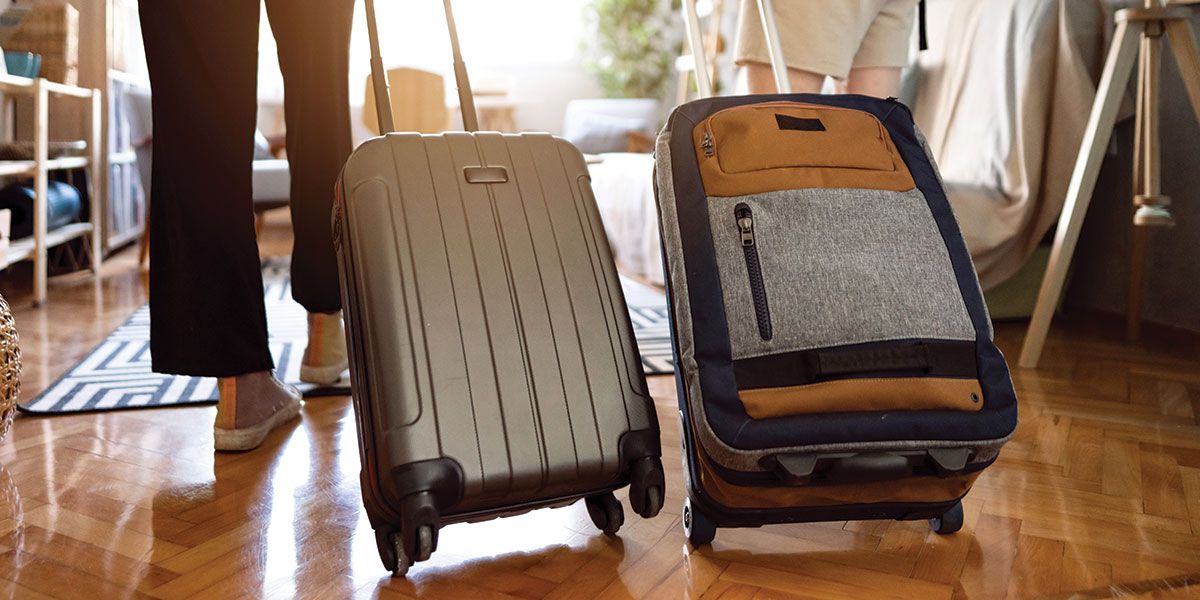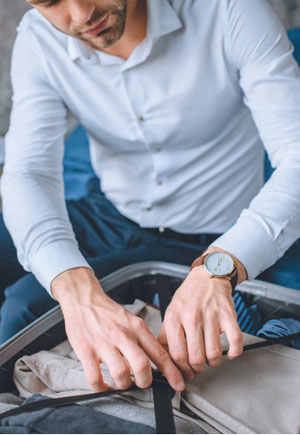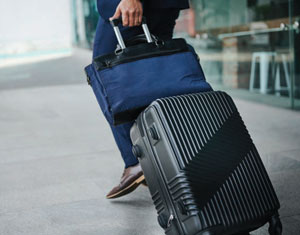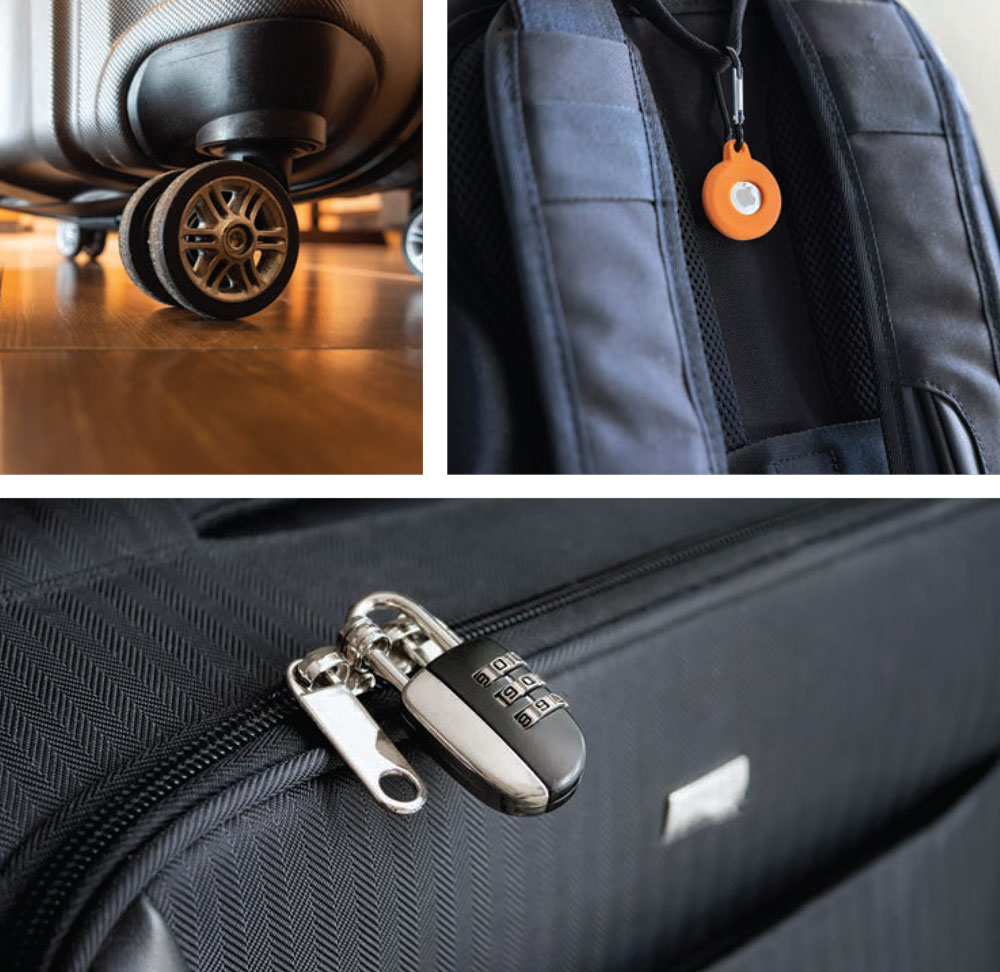Pack with Purpose | Choosing the Right Luggage

We’re on the move again! We’re traveling domestically and internationally, so we need to be sure our luggage is in good working order. Toting the right type of bag to fit current airline luggage rules will help you avoid extra fees and comply with carry-on restrictions and check-in weight limits. Is it time to replace or upgrade? Here are some tips to get started.
 Pack with purpose
Pack with purpose
If you mostly take car trips, soft, pliable bags that conform to trunk spaces are best. If you cruise, rigid luggage is the right choice. If your priority is airline travel, pay attention to the luggage guidelines of the airlines you plan to use.
A major consumers’ interest group gathered information from owners of 12,626 carry-ons and 25,551 suitcases that were checked at airports. The respondents said their top suitcase feature was wheel-ability and the second feature was durability, including how well zippers, handles and fabric held up. The quality of luggage often depends on the quality of the zipper. A chain zipper, made of metal, is stronger than a coil zipper made of polyester, which can be pulled apart with a ballpoint pen! A YKK zipper is regarded as the industry’s most reliable.
Soft or hard shell?
• Hard shell is best for protecting breakable contents, and those with integrated locks offer better security. Despite new materials making them lighter, they are heavier than soft-sided bags but ideal for cruises where all luggage is stacked in the belly of the ship before departure. Note that those with a center closing, the vast majority, require two times the space to open them for convenient access to items inside.
• Soft-sided luggage, which continues to dominate the market, is made of fabric such as Cordura® or ballistic nylon. Lighter in weight than hard-shell, they can also compress and conform to tight spaces like a plane’s overhead bin or a car’s trunk. Being fabric, these are susceptible to ripping and crushing so are not as protective as hard-shell suitcases.
 What about wheels?
What about wheels?
Wheeled suitcases comprise two-thirds of all luggage sales today. If you want wheels on your luggage, decide whether to buy a two- or a four-wheeler.
• Two-wheel suitcases use the same type of wheels as in-line skates, rolling only forward and backward. The suitcase rolls behind as you pull it from the extending handle. Wheels are recessed, which protects them from snapping off during rough handling but takes up space in your bag. For city trips, two-wheelers are best for clearing curbs and rolling on uneven surfaces, such as sidewalks.
• Four-wheel luggage has swivel wheels, so the bag can be spun 360 degrees. It is easily moved through tight spaces. A large suitcase with four wheels may be easier to manage because you don’t have to drag it, and it does not put stress on your shoulder. Unfortunately, unlike the recessed wheels, these wheels are externally mounted, making them vulnerable to damage. Look for wheels attached with screws, which are more secure than rivets.
• No-wheel luggage maximizes interior space in your luggage. If you are going on a luxury tour and will never have to move your own bag, wheel-less may be perfect.
Other features to consider
• Suitcase handles are retractable on wheeled luggage and usually take up space inside. A handle that retracts completely inside the bag is less likely to get damaged. Look for a soft-grip handle with an adjustable length. Two-wheeled bags have one- or two-post handles; two is preferred by many who use the posts to support a laptop, briefcase or smaller tote while walking.
• Most of the weight you pull around in an airport should come from the contents of your bag, not the bag itself. A non-wheeled bag should be 2-4 pounds and a wheeled one no more than 7.5 pounds. Check with your airline about weight limits to avoid a fee.
• For domestic travel, a luggage lock must be TSA compliant, which means an agent can open it with a master key.
What’s new?
“Smart features” have come to luggage with location tracking, digital locks, built-in digital scales and more! It is best to check out luggage tracking devices to see the wide range of options and prices on these items.
If you carry spare lithium ion and lithium metal batteries or power banks and chargers for your electronic devices, federal airline safety rules require that you keep them in your carry-on. Be sure to place them in their original packaging or cover their contacts with nonmetallic tape to prevent short circuits. Check the Federal Aviation Administration’s rules for more detail.
Ignore labels that proclaim, “Official Carry-on Luggage.” There’s no regulation that dictates carry-on size; airlines impose their own restrictions and limits can vary. Know the rules of the airlines you plan to fly. Measure the dimensions yourself and make sure the measurements account for all parts, including outer pouches, wheels and handles. Bon Voyage! ✦
airline luggage, car trips, carry-on restrictions, check-in weight limits, four-wheel luggage, hard shell, luggage, smart features, soft-sided luggage, suitcases, two-wheel suitcases, wheeled suitcases







